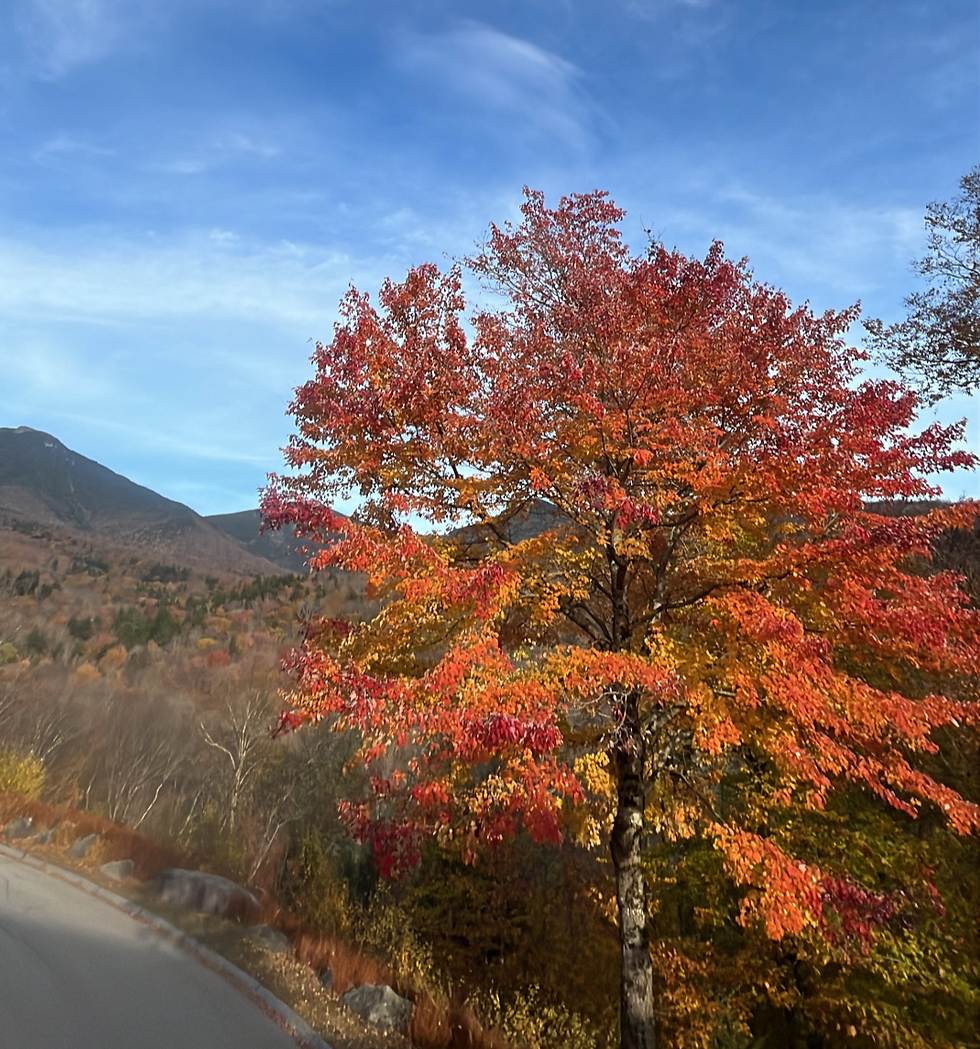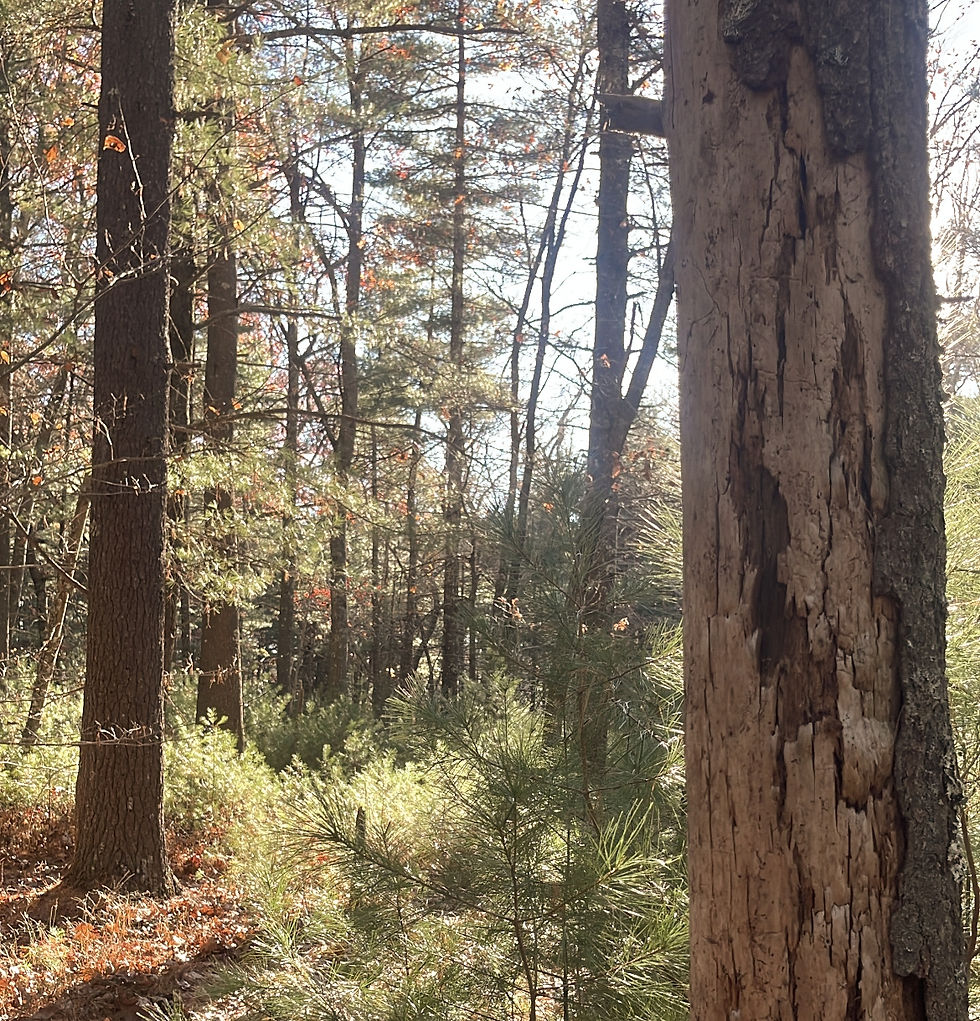The Beauty and Science of Deciduous Trees
- Dayzane Desouza
- Oct 20
- 3 min read
As autumn arrives in Massachusetts, the familiar landscape of deep green trees transforms into a breathtaking mosaic of crimson, amber, gold, and russet hues. This seasonal spectacle is more than just a sign of beauty, it’s a fascinating scientific process that reflects how trees prepare for the cold months ahead.
Why Leaves Change Color in the Fall
During Spring and Summer, leaves act as the tree’s food factories, using sunlight, water, and carbon dioxide to create sugars through photosynthesis. The pigment responsible for the green color, chlorophyll, is abundant during this time because it’s essential to this process.
As daylight hours shorten and temperatures drop, trees begin preparing for dormancy. They gradually stop producing chlorophyll, causing the green to fade away and allowing other pigments hidden within the leaves to emerge. Carotenoids, which produce yellow and orange hues, and anthocyanins, responsible for red and purple shades, become visible.
The mix of pigments, along with environmental factors such as temperature and moisture, determines the vivid range of colors seen each autumn. Cool nights and sunny days, common in Massachusetts during the fall, enhance anthocyanin production, creating the brilliant reds and purples that define New England’s world famous foliage season.
Deciduous Trees Preparation for Winter
While the brilliant colors draw attention, this natural transformation signals an important shift in the life cycle of deciduous trees. They shed their leaves as a survival mechanism to conserve water and energy during winter when the ground freezes and water becomes scarce. By dropping leaves, they reduce the surface area through which water can evaporate and prevent damage from heavy snow accumulation.
The Importance of Fall Tree Care in Our Area
Even though trees prepare naturally for winter, they still need care to remain healthy and resilient through the harsh New England weather. Late autumn is one of the most critical times of year for tree maintenance. Proper care during this period helps prevent disease, structural damage, and nutrient loss caused by freezing temperatures, heavy snow, and strong winds.
Deep Watering
Before the ground freezes, trees should be deeply watered to help their roots absorb enough moisture. This prevents dehydration during winter months when the soil is frozen and water is less available. So before you complain about getting lots of rain during this season, this is a friendly reminder that it's not up to us to tell God how to get the job done.
Pruning
Fall is also an ideal time to prune dead, diseased, or weak branches. Pruning helps prevent breakage from snow and ice buildup and promotes healthier growth in the Spring. Without proper pruning, your trees won't grow stronger and your fruit trees may not bear fruits when Spring arrives.
Mulching
Applying a layer of mulch around the base of trees helps insulate roots, retain moisture, and regulate soil temperature. Keep mulch a few inches away from the trunk to prevent rot and pest issues.
Fertilizing and Professional Inspection
A slow release fertilizer applied in late fall replenishes essential nutrients and strengthens roots for the coming year. It’s also wise to schedule a tree inspection to identify potential hazards, especially since high winds and ice storms can cause damage to weak limbs or older trees.
Preserving the Trees That Define Massachusetts
Caring for trees before winter is a valuable investment in your property. Healthy trees improve air quality, provide habitats for wildlife, reduce soil erosion, and enhance curb appeal.
As the vibrant leaves fall and the landscape shifts toward winter, taking the time to protect your trees ensures they stay strong and beautiful year after year. In Massachusetts, where winter weather can be long and unforgiving, seasonal maintenance and tree removal practices are the key to preserving the natural beauty of your landscape and safety of your property and your loved ones.
Do you have trees that may need to be seen by a professional before the next season storms in?








Comments